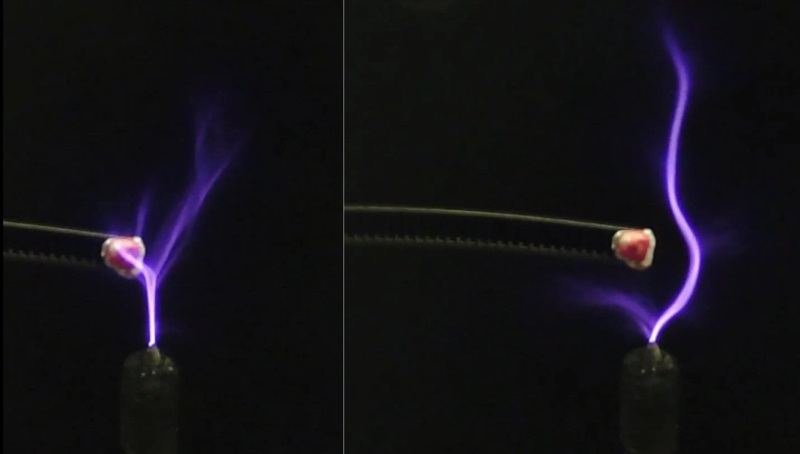Electricity is chaotic, and its use is usually limited to wires and circuits. However, an international team of scientists from Europe and Canada has managed to precisely direct electric sparks in the air and even make them bend around obstacles using ultrasonic waves. Details of the work have been published in the journal Science Advances.

Image source: newatlas.com
In a new study, researchers from the University of Helsinki, the University of Navarra and the University of Waterloo have demonstrated a way to control airborne electrical sparks. The technology enables sparks to be directed so precisely that they can bend around obstacles and reach specific points on a material, even if it is not electrically conductive.
«We observed this phenomenon more than a year ago, after which it took us months to get it under control and even longer to find an explanation,” said Asier Marzo, one of the study’s participants.
The trick is to use ultrasonic waves. The thing is that sound waves at such frequencies create air pressure sufficient to levitate tiny objects. In this case, the waves do not stimulate the electricity itself, but only shape its trajectory. When a spark is formed, the air around it heats up. Warmer air expands, which reduces its density. Since electricity passes better through air with a lower density, the spark moves in this direction. Ultrasonic pulses allow you to move warmer, lower-density air, which, in turn, sets the direction for the electricity to move.
The researchers tested the technology using a pair of ultrasonic emitters surrounding a point where a spark is generated using a Tesla coil. When the ultrasound is turned on, the spark transforms from a tree-like shape into a single line that can be directed in the desired direction by physically moving the emitter or adjusting the ultrasound power. The scientists were able to direct the sparks so that they hit certain electrodes and avoid others, which helped enable controlled switching in wireless circuits.
«”I’m excited about the possibility of using very weak sparks to create controlled tactile sensations in the hand and possibly create the first contactless Braille system,” said study co-author Josu Irisarri.